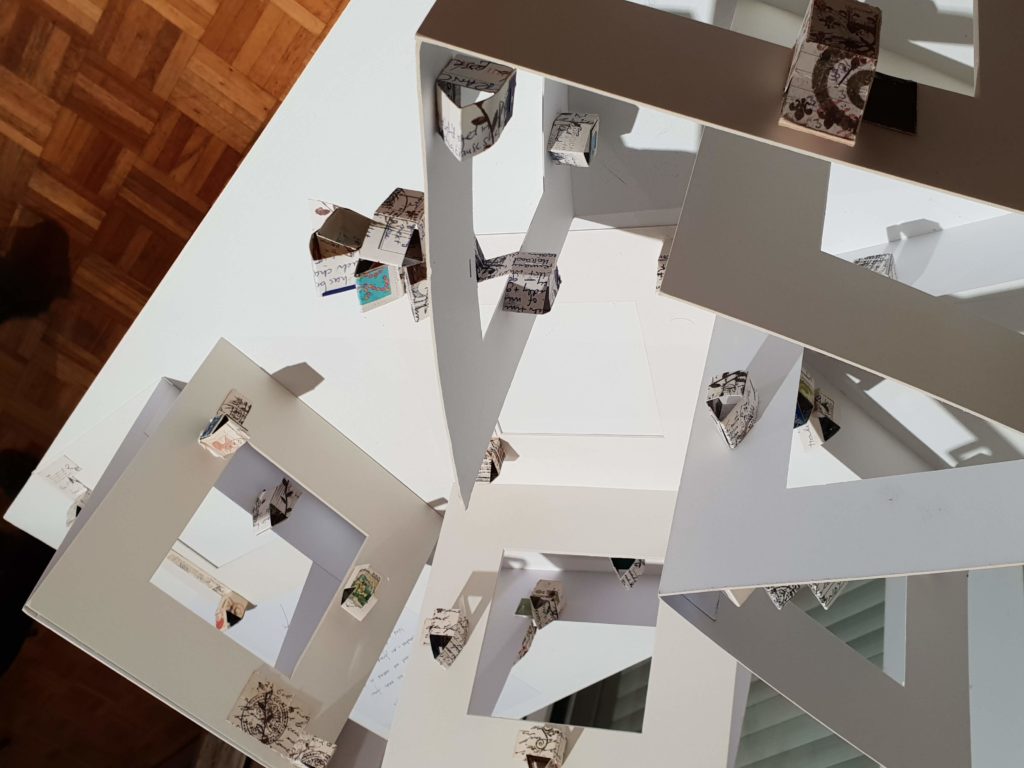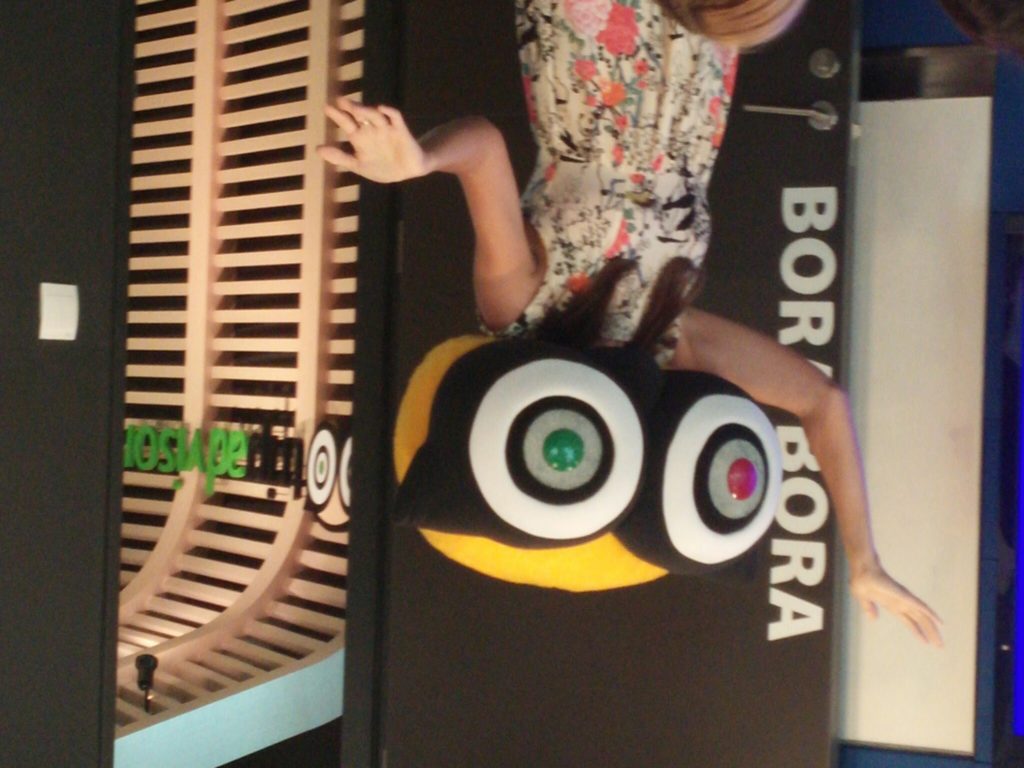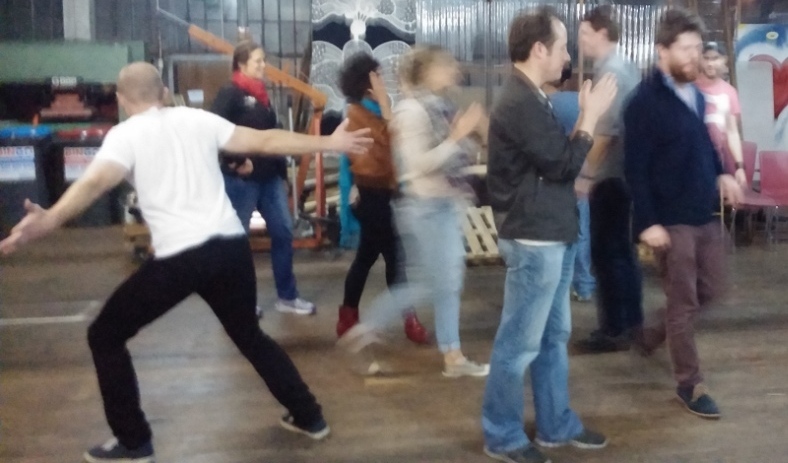Team-building has real benefits. You want what you do at your offsite to have the highest value. You would like it to be both relevant and fun.
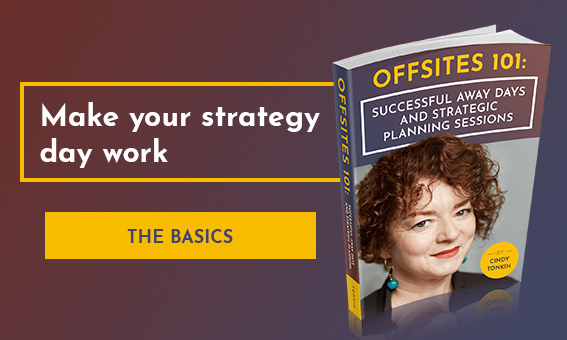
I’ve been hanging out in the thick of team building events and offsites for about 30 years now.
I’ve noticed that events fall into categories. Which fit neatly (of course) into a 4 quadrant model.
The four styles of team building events
First, there are those team building events which have an overt, clear corporate purpose. They are easily perceived as relevant by those who pay the bills and by those in the room itself.
Then there are those with NO overt corporate purpose. These can be perceived as irrelevant (and they sometimes are, let’s be honest).
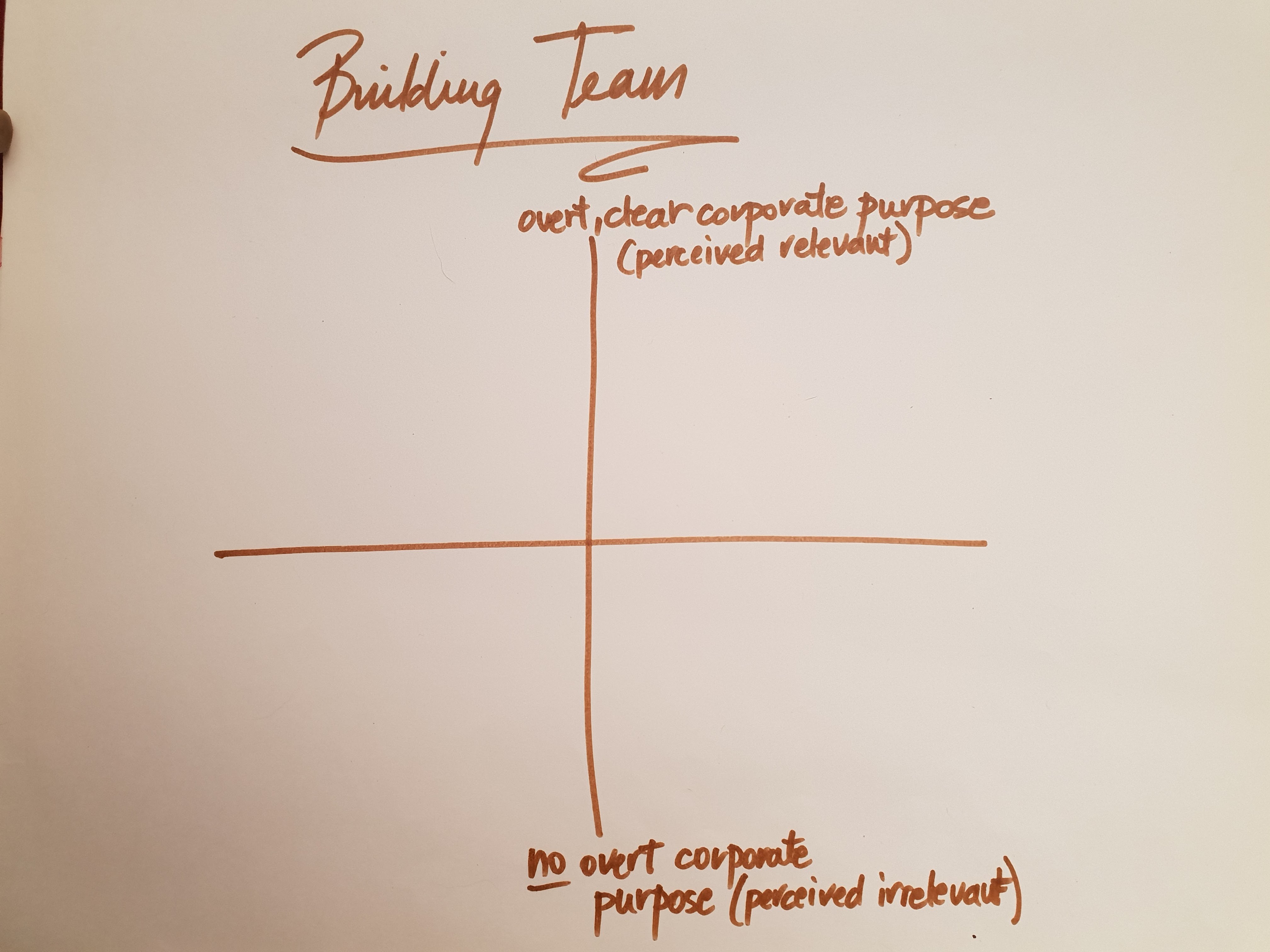
The second axis on this model are the serious events compared to the fun events.
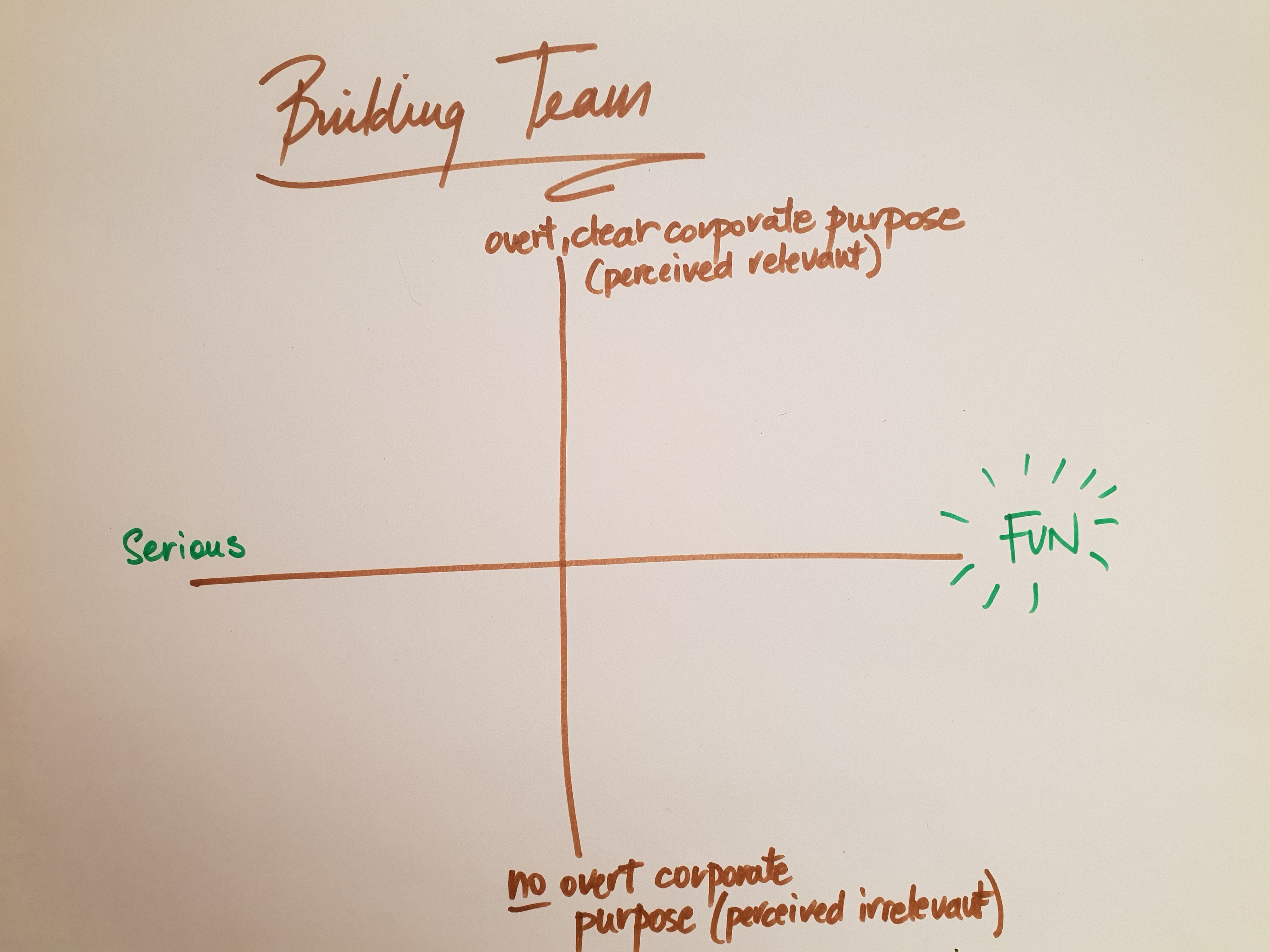
Serious or fun, clearly corporate or not
So given this model, let’s put the kinds of events that we indulge in for corporate team building onto the grid.

The classic serious event is generally known as Strategic Planning. This has an overt, clear corporate purpose. It’s easily perceived as relevant and it is usually quite serious. Here are some strategic planning workshop activities I like to use.
Then we have the serious events which have no clear corporate purpose. Team building that’s about giving back: volunteering at a kid’s hospital, building a house or repairing a shelter, giving blood. They are serious ends, and while they are usually enjoyable their key purpose is not to have fun, but give back.
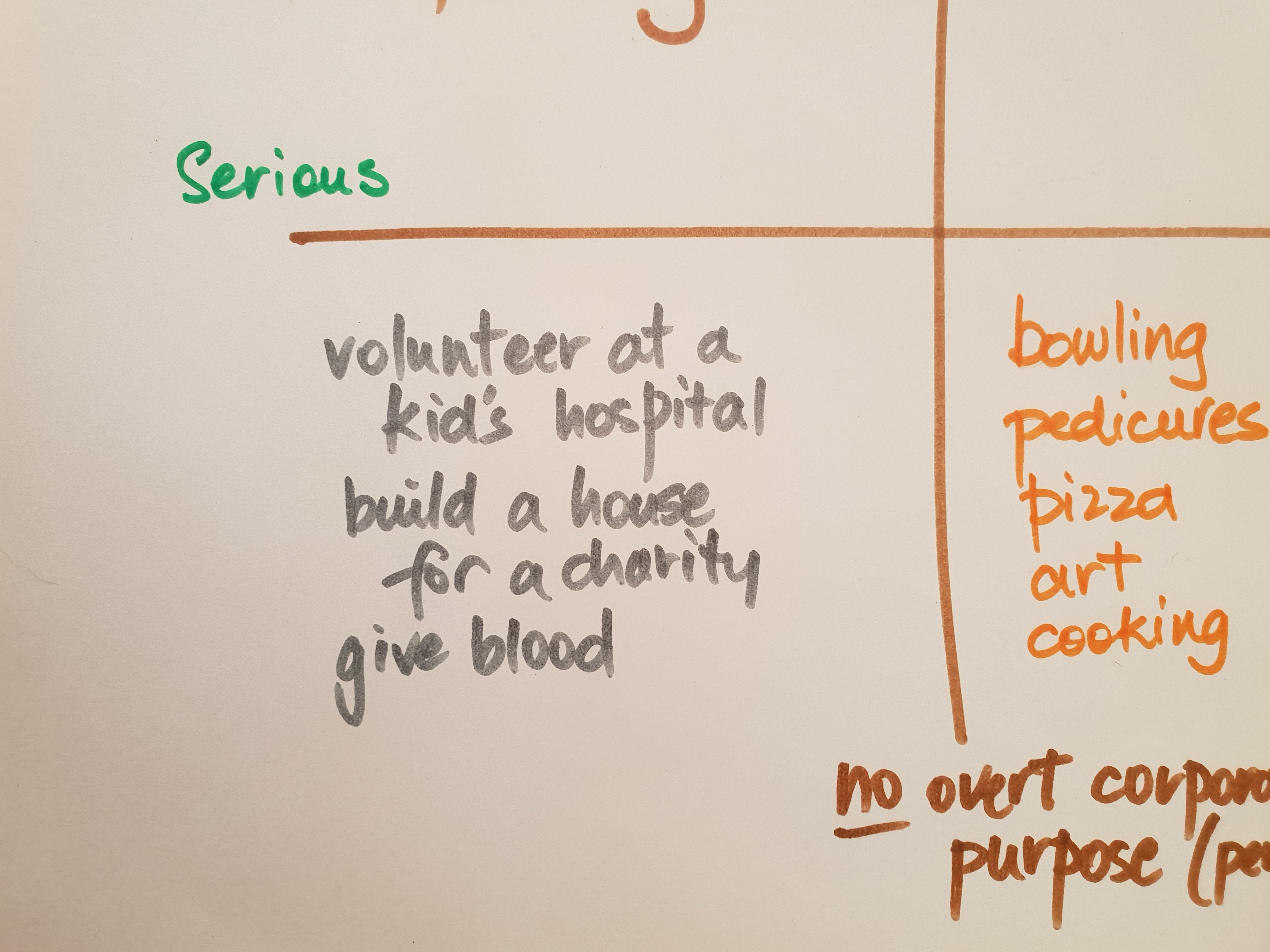
Then in the fun but with no clear corporate purpose quadrant you’ll find a few other types of team building events.
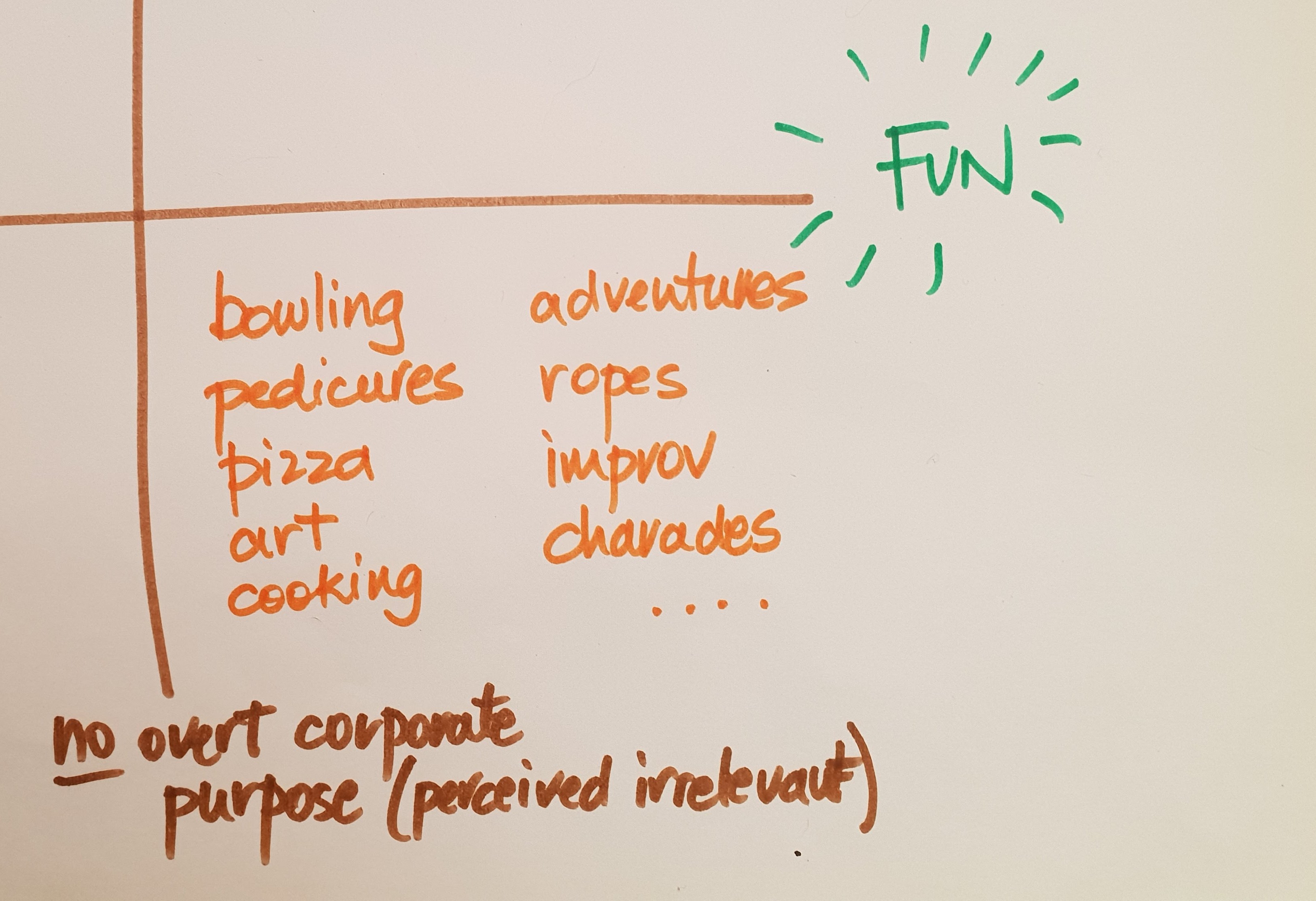
All of these have been done by clients of mine in the past: bowling, pedicures, pizza, art-making, cooking, bush adventures, ropes, improv, charades.
None of these have any overt corporate purpose, and they are usually billed as fun. Here are some improv games that can fit this bill.
The important quadrant: fun AND relevant
Finally there is the important quadrant: the overt corporate purpose which is ALSO fun:
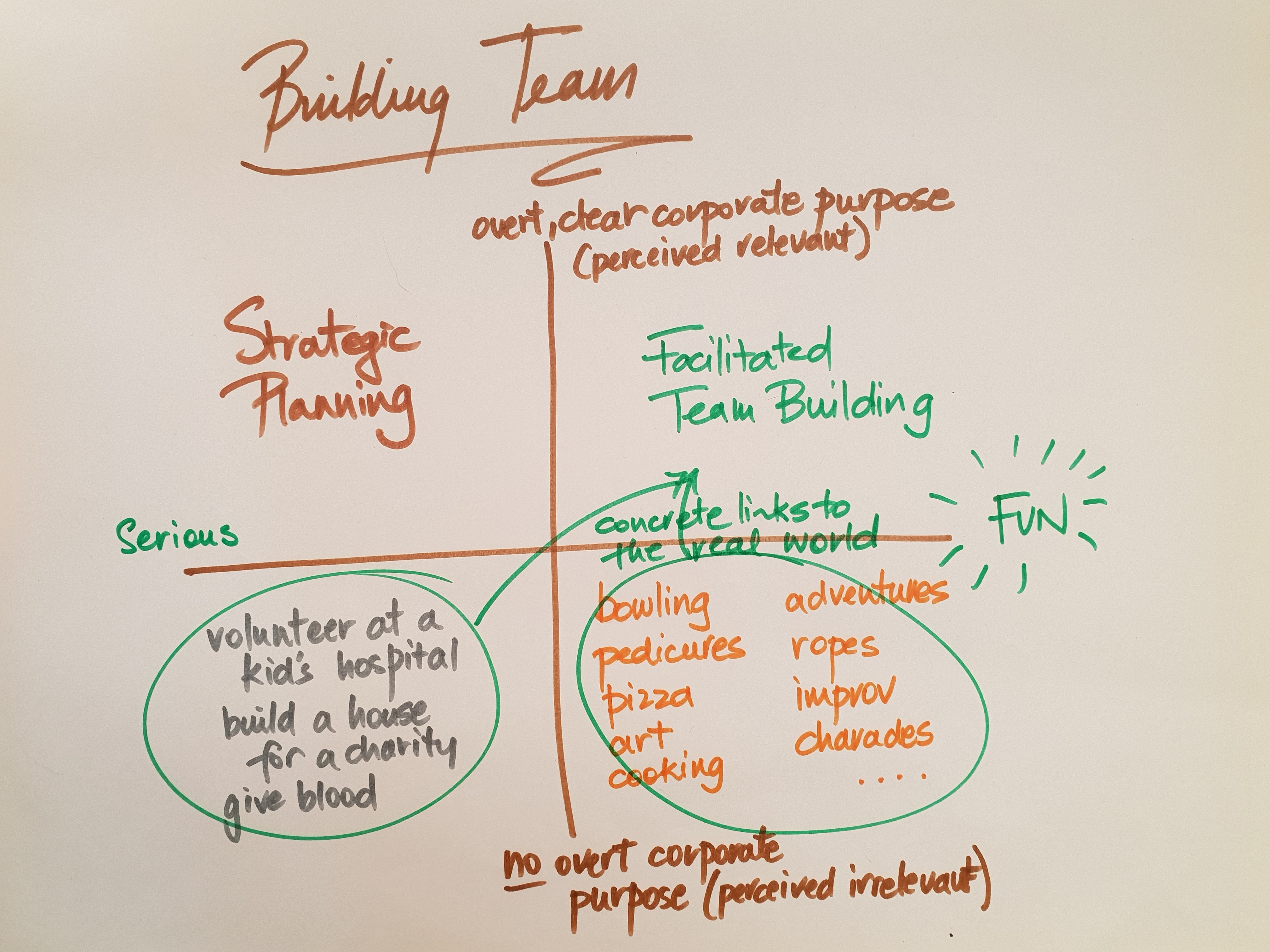
It’s not much different, except that it’s facilitated. Whether you have a facilitator in the room with you, or you use a facilitator to structure the experience for you, the concrete links from the activity (serious or fun) bring the activity back to how we work together at work.
I’ve seen both the serious and the fun with no corporate purpose have great effects when the links were made. And I’ve also seen both fail.
Qualities of an effective team building event
For a team build to be effective it needs to do all of these things:
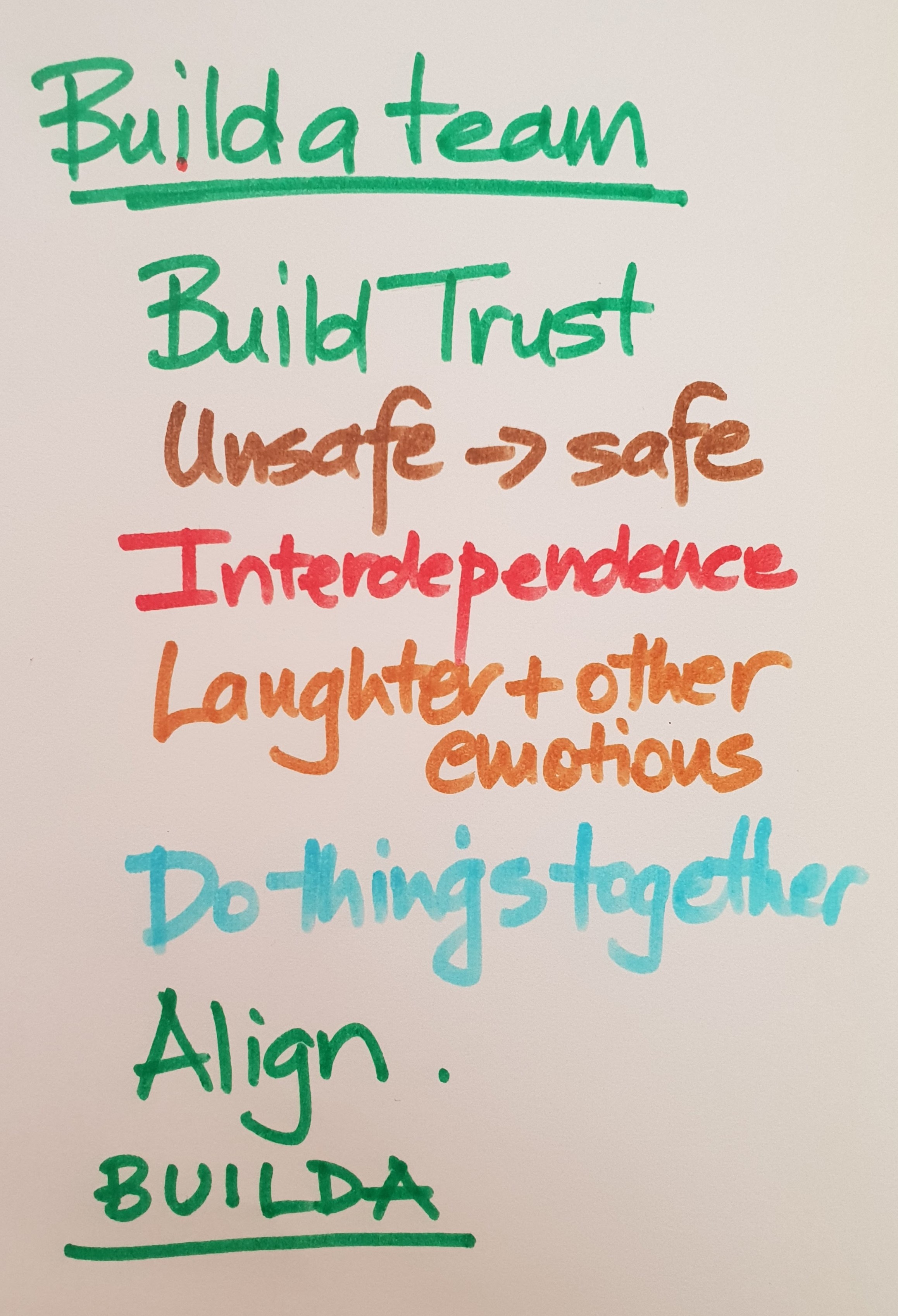
- It needs to build trust
- It needs to make the unsafe feel safe (and that’s not just the activity: it’s the interactions between the team members which need to feel safe)
- It needs to build the interdependence of the team
- It must involve laughter (or other nobler emotions)
- It needs to have them doing things together.
- It must align them.
The so-what link must be made
There is a particular mental pattern or learning style that means some people can generalise an experience of cooking a meal to other contexts: how they work as a team, how they interact with their family, how they need to get ready for work in the morning.
Not everyone has this mental pattern – as few as 25% of your team may see the link between that jigsaw puzzle and how they solve problems. Or the ropes course and the way they deal with their customers. If you see it, then that’s great. If they don’t it can make them grumpy.
You must make it obvious to them so that they as participants feel you’ve done something worthwhile.
You may have to make it obvious to your boss so that they are happy with the expenditure.
Teams do build by themselves. Slowly. And if your team mostly deals with customers or stakeholders and rarely with each other at work, is it any surprise that they may need a little help as a team?
You know where I am if you want to make it easier for your team to work smarter, faster and nicer. And here’s what happens behind the scenes once you make your decision to work with me today!




